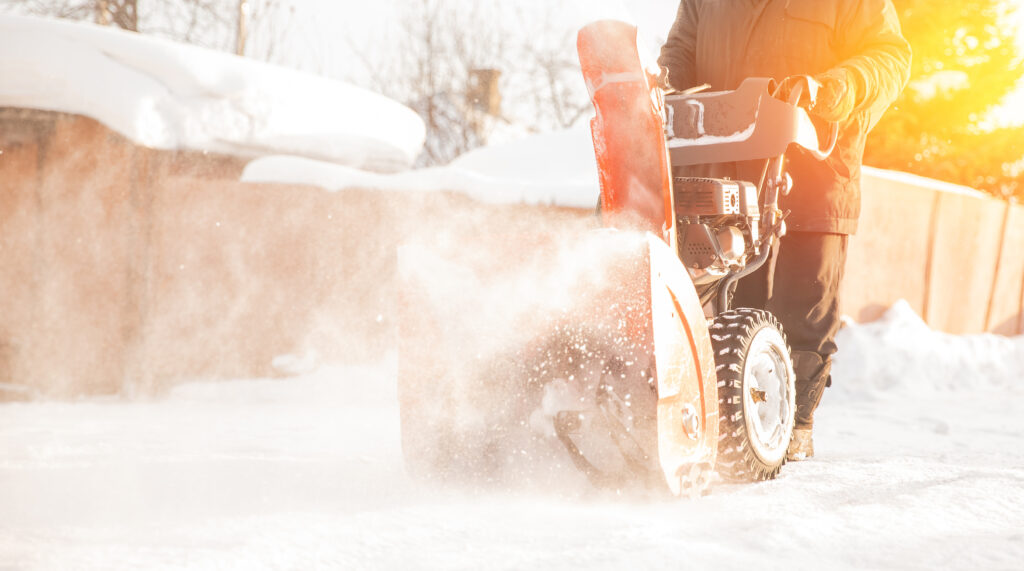Poorly stored fuel is the top cause of a hard-starting or non-starting snowblower.
This is true of all seasonal equipment, but fuel storage for snowblowers is especially important because even during the winter months, your fuel can sit for weeks or longer, depending on the weather.
Most snowblower engines are simple. They are typically a single-cylinder, four-stroke, carburetor intake engine, and they have a very basic fuel system. The key to maintaining these kinds of engines is proper fuel management.

When a snowblower (or any small engine) won’t start, the majority of the time this is caused by old fuel that sat in your snowblower’s fuel tank or carburetor for an extended period of time. When fuel sits in your small engine, unused, its ignition vapors start to evaporate and cause the fuel to destabilize. As old fuel breaks down, it can also leave sticky petroleum varnish deposits in your carburetor. These deposits can block tiny fuel passageways, leading to a hard-start or no-start condition.
You can prevent engine problems in your snowblower at the pump. Simply add Sea Foam Motor Treatment to a fresh container of gas.
Add one ounce per gallon to keep your fuel stable throughout the season. When you add the treated fuel to your snowblower, it will also work through your fuel system to clean and remove harmful deposits.
If your snowblower is running rough, you can add Sea Foam directly to your machine’s gas tank. Sea Foam is made from petroleum-based ingredients and will not harm your engine, no matter how much you add. In fact, the more you add, the better it works. It’s as easy as that.
PRO TIP: Fresh fuel is always best. If your fuel is older than 30 days, you can simply add it to your car or truck’s gas tank. Then get some fresh gas to have on hand for your snowblower when it needs to be used.
